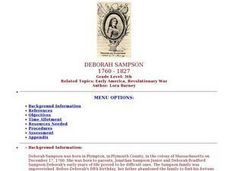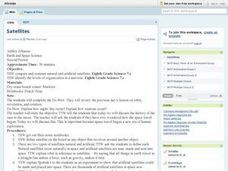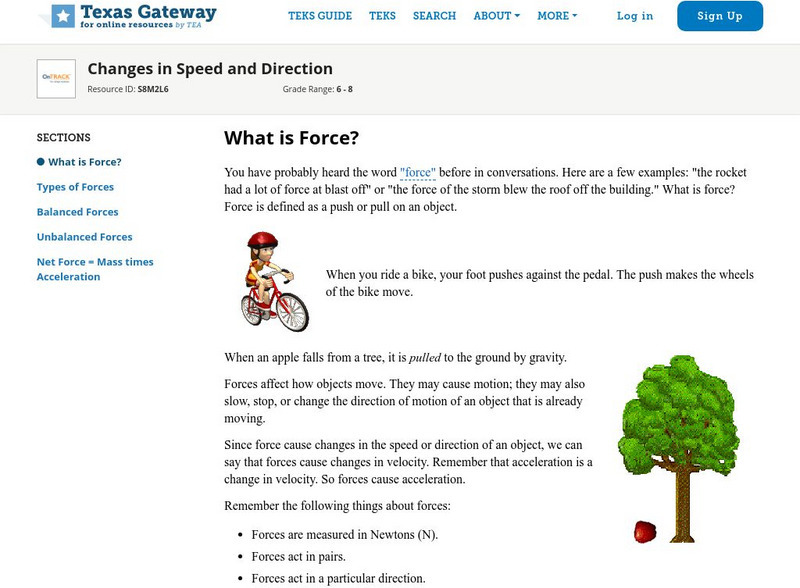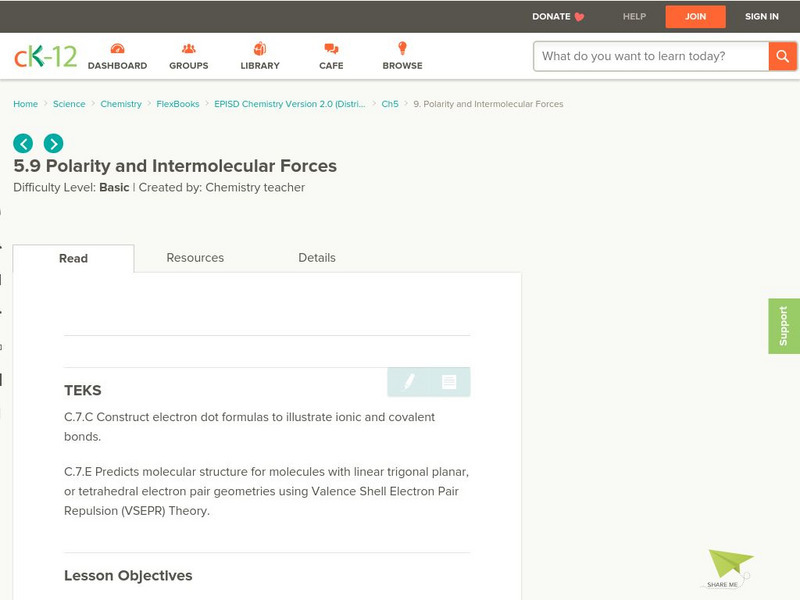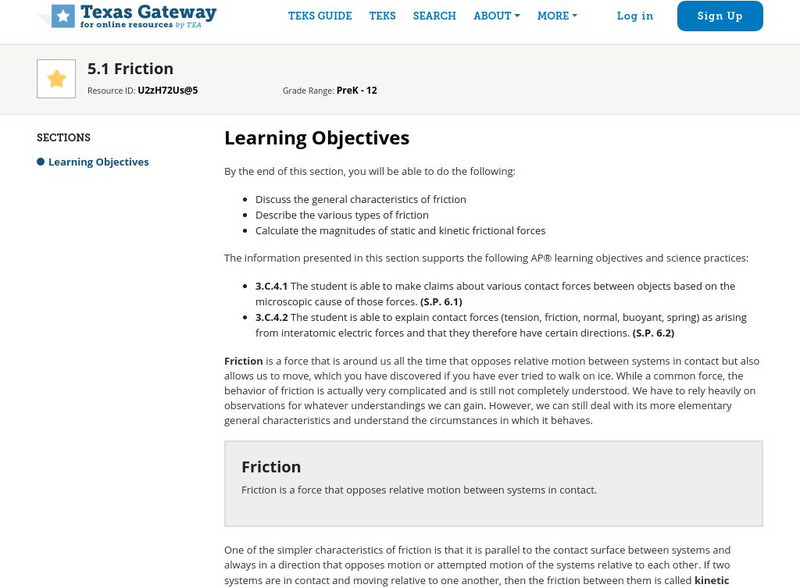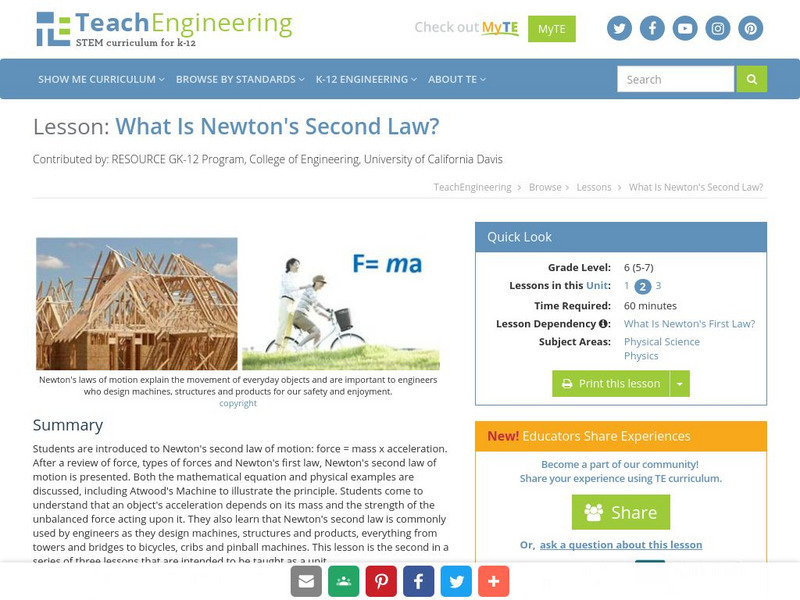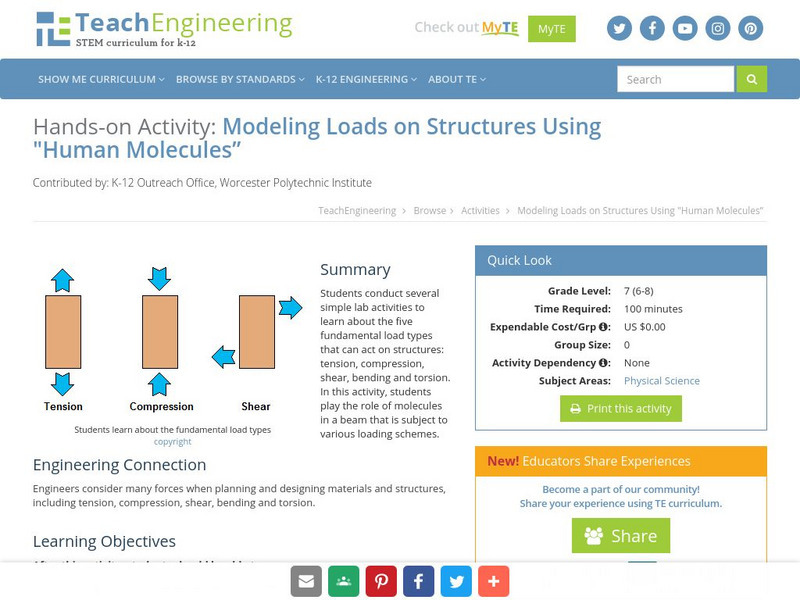Curated OER
Blowing in the Wind
Students compare hurricanes and tornadoes. They write a paragraph explaining how to prepare for a storm. Students give an oral report. They use weather facts to practice math skills. Students record observations of a storm.
Curated OER
Magnetic Domain
Students participate in activities in which they examine magnetic domains. They analzye how different colored metals and how they react to magnets.
Curated OER
Measurement: Length, volume, and temperature
Learners determine the temperature of the water in a cup, measure the length of a piece of cardboard, and measure out an appropriate volume of water. This task assesses student's abilities to perform measurement and reporting skills.
Curated OER
Can You Make A Penny Float?
Pupils explore the concept of density by trying to make a penny and other materials float.
Curated OER
Deborah Sampson
Fifth graders describe the major accomplishments of Deborah Sampson and her importance in American history. They list in chronological order the evets that took place in Deborah Sampson's life. They demonstrae their ability to...
Curated OER
Blowing in the Wind
Students identify and interpret maps, graphs, charts, tables and political cartoons. Students identify what a compass rose is and review its meaning in relation to standard directions. Students design their own weathervanes. Students...
Curated OER
Teaching The Scientific Method Using Adhesives
Young scholars use the six step scientific method to experiment with the differences in adhesives. Students test for tack, shear, and peel in these activities.
Curated OER
Traveling Along the Indiana Underground Railroad
Students develop a deeper understanding of the role that Indiana played in the Underground Railroad while exploring Indiana Geography.
Curated OER
Magnetism: Magnet, Magnet, Where are you?
Students study the characteristics of magnets including polarity, and the concepts of attraction and repulsion. They examine how magnets are used industry.
Curated OER
Literature Review
Students review for a literature exam by answering knowledge question, interpretation questions and judgement questions about a novel or story they have just read.
Curated OER
Very Big Company
Students describe the problems of political independence without economic independence. They evaluate the natural resources, human resources and industrial resources of a country and make economic decisions. They evaluate strengths and...
Curated OER
Stream Flow in Blacks Creek
Young scholars explore what factors affect the stream flow in a local body of water. They collect data to measure stream flow and discharge and construct a hypothesis concerning the factors affecting stream flow.
Curated OER
Satellites
Eighth graders explore the history of space travel and satellites. Through a teacher demonstration, 8th graders observe how a satellite revolves another object. They identify natural and artificial satellites, explore how satellites...
Curated OER
What Floats Your Boat?
Students discover the Archimedes principle through a buoyancy experiment. They measure the water displacement of a lump a clay which is denser than water then reshape the clay into a bowl which floats but displaces more water.
Curated OER
Borah Peak Earthquake
students use the internet, an atlas map, and other sources to explore a map of Idaho. They locate the Lost River Range and Mt. Borah. Students read the atlas map to locate earthquake faults, find the magnitude, fault, and epicenter of...
Curated OER
Design of Airfoils and Problem- Solving Using FoilSim
Ninth graders, after reading the explanation given below, complete the problem-solving activities to demonstrate an understanding of the concepts presented.
Curated OER
Gaining Familiarity with Magnetism
Young scholars discuss their perceptions of magnetism and explore the background ideas of magnetism.
Curated OER
National Forests of Wisconsin and Puerto Rico
Fifth graders study the forests of Wisconsin and Puerto Rico. They view a Power Point presentation and predict slides to represent various forests in Wisconsin and Puerto Rico. They play a game to recognize differences and similarities...
Curated OER
ESL: Forming Simple Past Tense
In this ESL worksheet, students fill in the correct form of given verbs to complete a simple paragraph. Students may click on either a "check answers" or "show a letter for help" button.
Texas Education Agency
Texas Gateway: What Is Force?
You have probably heard the word "force" before in conversations. Here are a few examples: "the rocket had a lot of force at blast off" or "the force of the storm blew the roof off the building." What is force? Force is defined as a push...
CK-12 Foundation
Ck 12: Polarity and Intermolecular Forces
[Free Registration/Login may be required to access all resource tools.] The following online tutorial describes how the electronegativity difference between two atoms in a covalent bond results in the formation of a nonpolar covalent,...
Texas Education Agency
Texas Gateway: 5.1 Further Applications of Newton's Laws: Friction
By the end of this section, you will be able to discuss the general characteristics of friction, describe the various types of friction, and calculate the magnitudes of static and kinetic frictional forces.
TeachEngineering
Teach Engineering: What Is Newton's Second Law?
After a review of force, types of forces, and Newton's first law, learners are introduced to Newton's second law of motion: force = mass x acceleration.
TeachEngineering
Teach Engineering: Forces on the Human Molecule
Students will conduct several simple lab activities to learn about the five fundamental load types that can act on structures: tension, compression, shear, bending, and torsion. In this activity, students will play the role of molecules...




